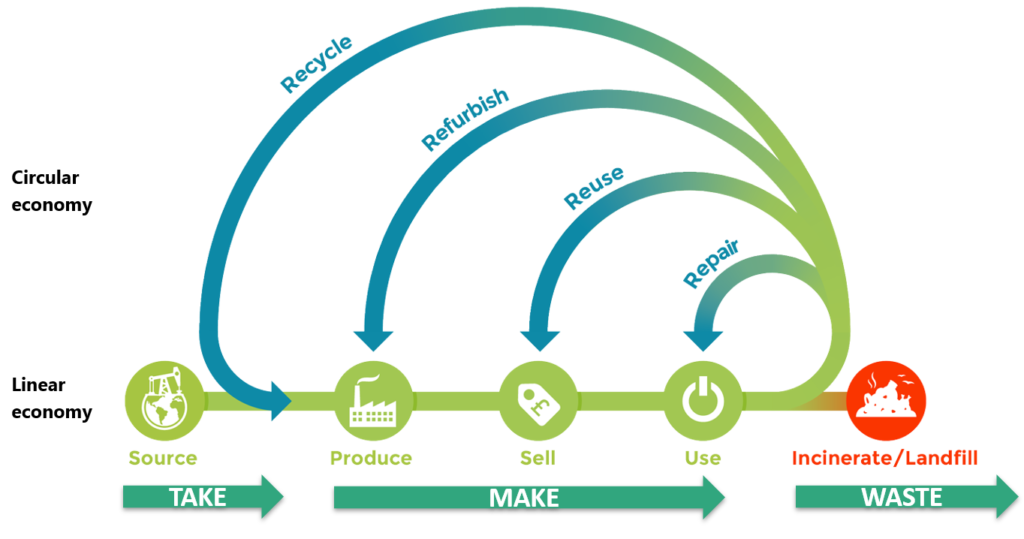The European Parliament defines circular economy as a “model of production and consumption in which existing materials and products are shared, leased, reused, repaired, reconditioned and recycled for as long as possible. In this way, the life cycle of products is extended.” (http://www.europarl.europa.eu/news/de/headlines/economy/20151201STO05603/kreislaufwirtschaft-definition-und-vorteile).
In practice this also means that waste is reduced to a minimum. Once a product has reached the end of its life cycle, resources and materials remain in the economy as much as possible and can be used productively again and again to continue to generate added value”.
The circular economy stands thus in opposition to the linear economy (“take-make-waste”), which is anchored worldwide: companies exploit raw materials (TAKE) to make products (MAKE) that are sold to consumers. The latter use products and throw them away (WASTE) when they no longer have any use for them (“disposable economy”). Circular economy aims to maintain the value of products as long as possible by reusing, repairing, restoring and recycling products. For this reason, the circular economy is considered a “value generator”, whereas the linear economy is considered a “value destroyer”.
source: https://www.europeangeneration.eu/single-post/2019/10/25/Circular-economy-and-the-EU
